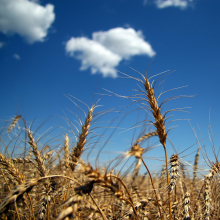
Drought and extreme heat waves dramatically reduced crop yields during the second half of the 20th century and will likely pose a serious threat in the coming decades, according to new research published in the journal Nature. The scientists found that drought and extreme heat slashed cereal harvests by 10% and 9% respectively between 1964 and 2007, while extreme cold events and floods had no significant impact on crop harvests. “We have always known that extreme weather causes crop production losses,” says senior author Navin Ramankutty, a food security professor at the University of British Columbia in Canada, “But until now we did not know exactly how much global production was lost to such extreme weather events, and how they varied by different regions of the world.” The researchers analysed national production data from the Food and Agriculture Organisation for 16 cereals in 177 countries and also examined the effects of about 2,800 international weather disasters from 1964 to 2007. They found that the impact of droughts on cereals like corn, rice and wheat increased in recent decades: From 1985 to 2007, droughts caused cereal production losses averaging 13.7%, up from 6.7% for the period from 1964 to 1984. Almost 3 billion tonnes of crops have been lost since 1964, about three years of global maize harvests. The results also highlight 8–11% more damage in developed countries than in developing ones. Production levels in the more technically advanced agricultural systems of North America, Europe and Australia dropped by an average of 19.9% because of droughts – roughly double the global average. “Across the breadbaskets of North America, for example, the crops and methods of farming are very uniform across huge areas, so if a drought hits in a way that is damaging to those crops, they will all suffer,” said first author Corey Lesk from McGill University. “By contrast, in much of the developing world, the cropping systems are a patchwork of small fields with diverse crops. If a drought hits, some of those crops may be damaged, but others may survive.” The authors of the study say the research provides key insight on the effects of climate on agriculture and may help to guide agricultural priorities in international disaster risk reduction and adaptation efforts. While farmers in wealthier countries, who rarely depend on harvests directly for food and have access to crop insurance, could opt for the strategy of maximising yields, running this risk could have disastrous results for farmers in developing countries. (ab)
